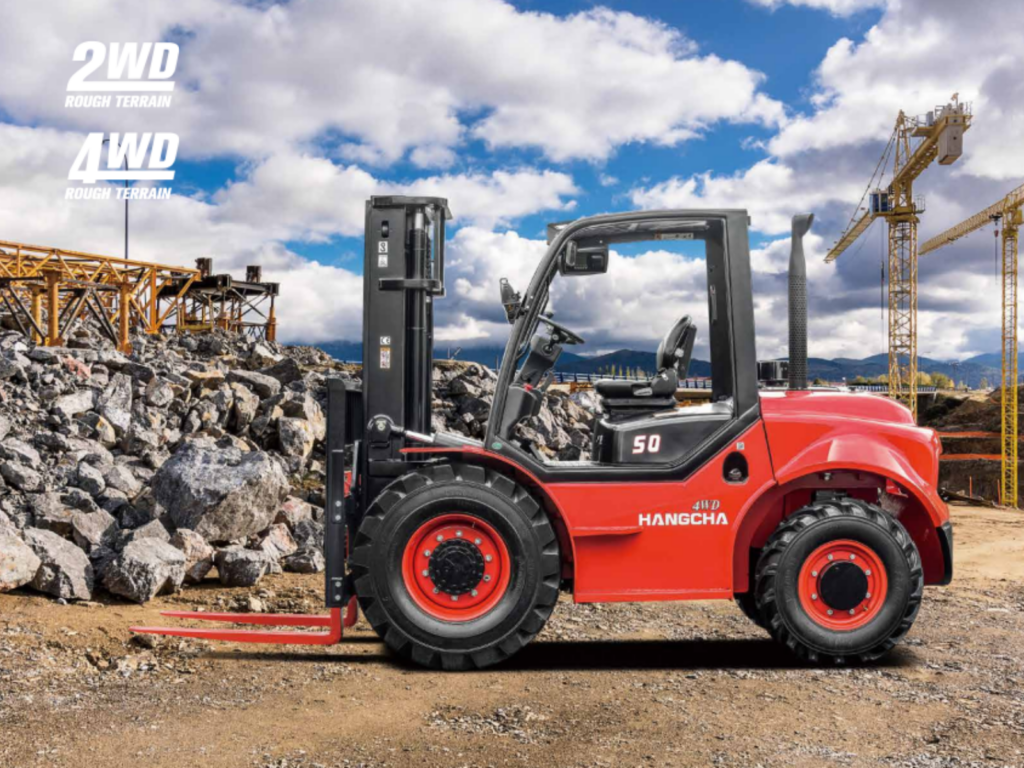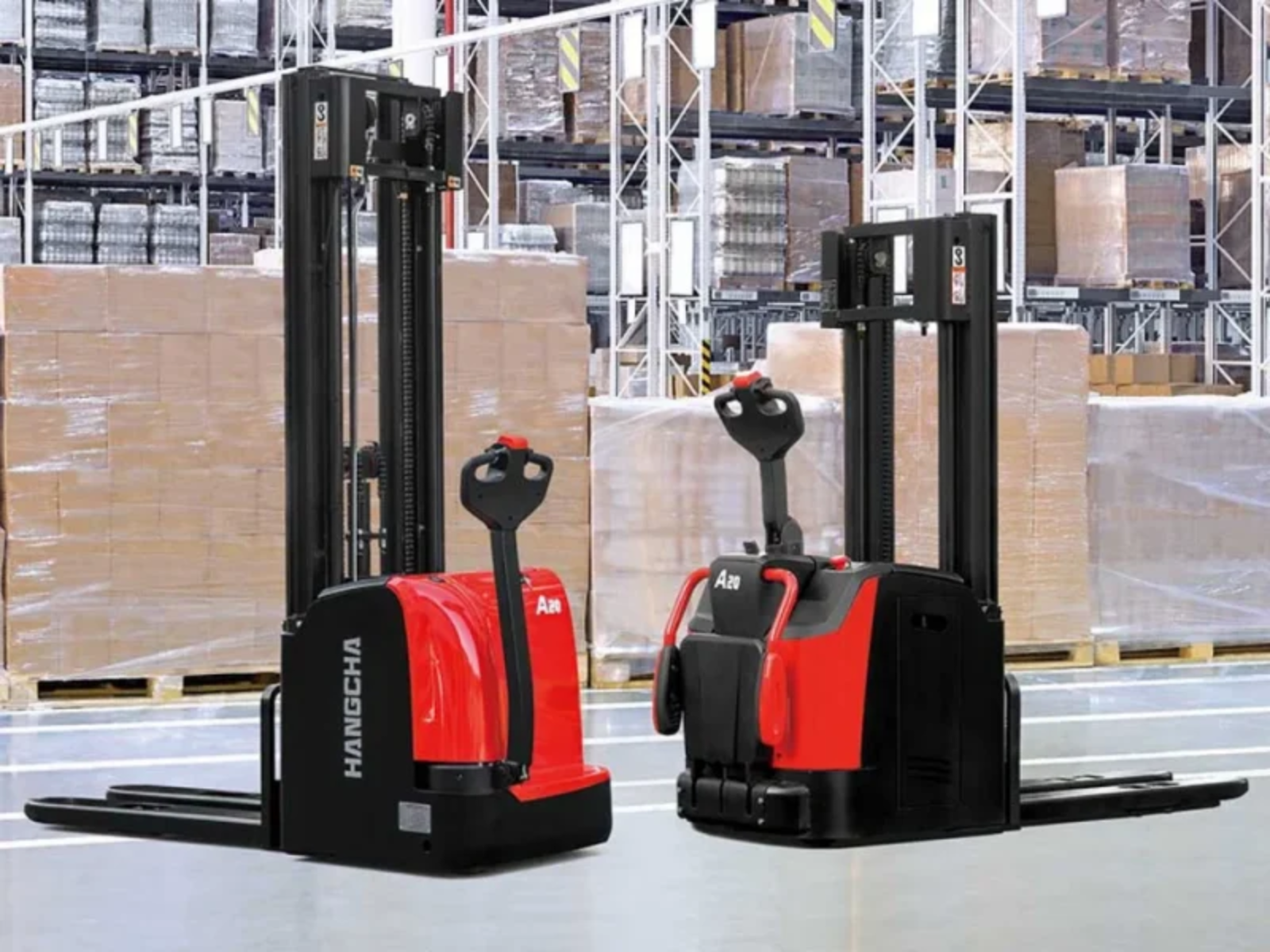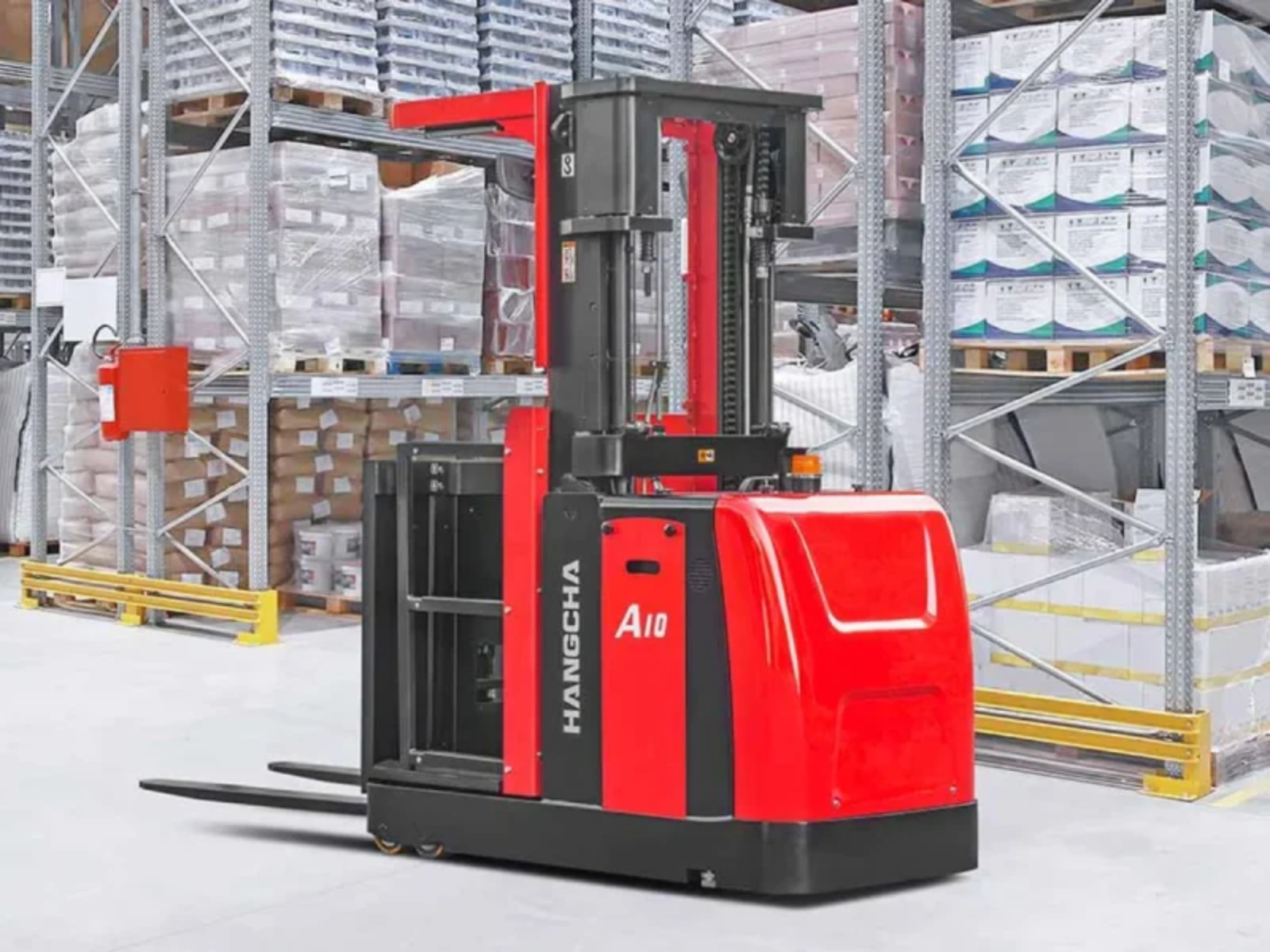Outdoor forklift needs come up more often than you’d think — whether it’s on a farm, forest, or mine site. And as of June 2025, it’s clear that standard warehouse forklifts just don’t cut it in these environments. That’s where an all terrain forklift (also known as a rough terrain or off road forklift) comes in. In this article, we’ll walk you through what they are and where they’re commonly used.
What Makes an All Terrain Forklift Different?
All terrain forklifts are specially built to handle bumpy, uneven ground with ease, making them ideal for farms, construction sites, and other tough outdoor environments. They usually come with large, heavy-duty tires, greater ground clearance, stronger traction, and better climbing performance. Many models even offer 2WD or 4WD options to help tackle tough environments.
According to ANSI/ITSDF B56 (a U.S. standard for industrial trucks), rough terrain forklifts fall under Class 7 — meaning they’re in a category of their own when it comes to handling challenging terrain.
Common Types of All Terrain Forklifts
Based on their design, rough terrain forklifts can be divided into three main types:
Vertical Mast All Terrain Forklifts
- The most commonly used type
- Looks and operates similar to a standard forklift
- Usually comes in 2WD or 4WD options
- Lift heights range between 3 to 6 meters
Telehandlers (Telescopic Forklifts)
- Combines lifting ability with a crane-like telescopic boom
- The boom extends outward and upward, allowing operators to stack materials over obstacles or at height
- Offers more flexibility and reach than standard models
Articulated Rough Terrain Forklifts
- Designed for tight spaces and narrow aisles
- Great maneuverability, especially in compact yards or orchards
- Ideal for orchards, small yards, and compact construction zones

Where Are Rough Terrain Forklifts Used?
Farming and Agriculture
- Feeding livestock on muddy paths
- Moving seed boxes or chemical drums onto seeding machines
- Handling large hay bales or feed pallets
Construction Sites
- Moving materials over loose or rocky ground
- Lifting building materials to height
- Transporting timber and pallets across uneven or unpaved areas
Forestry
- Loading and unloading logs or processed timber
- Supporting mobile sawmills or timber yards
Mining
- Hauling mining parts, piping, and supplies
- Supporting maintenance around mining operations
Key Specs to Look for When Buying
Off-Road Capability
For many experienced users, this is the number one thing to consider. Look for larger, deep-tread all terrain tires designed for grip on mud, grass, and gravel. Standard forklifts with air tires often get stuck on rough ground or in potholes.
Engine & Drivetrain
The engine and transmission system greatly impact both price and performance. A good engine should be able to handle 10,000–15,000 hours without a major rebuild. The gearbox and drivetrain should also be inspected carefully — they affect traction and hill-climbing ability.
Attachments & Functions
Versatility is another major plus. Many rough terrain forklifts can be fitted with different attachments like buckets, bale grabs, fork positioners, side shifters, or even grapple arms.
Some farm owners even prefer using a telehandler that does double duty — replacing both a forklift and a loader. At DJJ Equipment, we offer a wide range of attachments for rough terrain and all terrain forklifts, including custom-made options to suit your job.
Trusted Brands and Models in Australia
TOYOTA
Known for their Active Stability System, Toyota’s rough terrain forklifts are safe, durable, and perform well on multiple surfaces.
Hangcha
Hangcha’s Rough Terrain series (2WD/4WD, 1.5t–10t) offers great value for money and proven reliability. Options include diesel or lithium, and even compact models that can fit inside containers.
JCB
JCB offers three main RTFL models — the 930, 940, and 945 — with lift capacities from 5.9t to 7.5t. These machines are built for productivity and mobility, especially in large construction zones or mining areas.
Looking for an All Terrain Forklift for Sale?
Whether you’re running a farm in WA, a building site in Brisbane, or a timber yard near Melbourne, a quality all terrain forklift can seriously improve your daily operations.
Check out our latest stock of all terrain forklifts for sale at DJJ Equipment.We offer a range of off road forklift models with different tonnages, fuel types, and attachments — all backed by local service and support.
— FAQ —
A telehandler is a type of rough terrain forklift equipped with a telescopic boom, offering greater reach and flexibility. Standard rough terrain forklifts (like vertical mast types) lift straight up and down, while telehandlers can extend outward and over obstacles.
All terrain forklifts with 4WD and large, deep-tread tires are best for uneven or rough ground. Telehandlers also perform well thanks to their high ground clearance and off-road drivetrains.
According to ANSI/ITSDF standards, all-terrain or rough terrain forklifts fall under Class 7 — designed specifically for outdoor and uneven surface use.
Not always. In Australia, a telehandler licence (for boom lifts) is different from a standard forklift licence (LF/LO). You may need separate certifications depending on the machine type and boom length.
Most rough terrain forklifts can lift 2.5 to 7 tonnes, depending on the model. Heavy-duty units (like JCB 945) can go beyond 7.5 tonnes. Lift heights typically range from 4 to 8 metres, though telehandlers may reach even higher.






.webp)